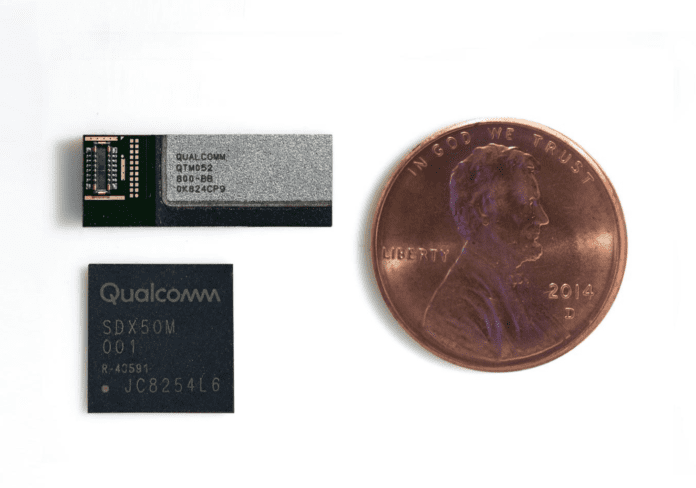Millimeter wave modules can be put into smartphone form factor
With U.S. carriers Verizon and AT&T touting commercial 5G service launches using millimeter wave spectrum later this year, the question has lingered: what devices will there be to support the high capacity, high band spectrum? This morning Qualcomm dropped the news it has successfully miniaturized its QTM052 millimeter wave antenna module to a point where multiple modules can fit into a smartphone form factor.
The 3GPP adopted the non-standalone 5G New Radio (NR) standard last year and followed in June with the standalone 5G NR variant. “One of the biggest questions has been around millimeter wave 5G,” Qualcomm’s Sherif Hanna, director of product marketing, told RCR Wireless News in an interview. “When most people think of 5G, they think of incredibly high data rates. A lot of that conception of what 5G will be is actually dependent on making millimeter wave work.”
But there are challenges. Hanna, noting the propagation characteristics of high-band spectrum, called out small coverage areas, erratic reflective behavior, signal blocking by a device users’ hands or body, as well as signal blocking by transient and static objects like trucks or buildings.
“These millimeter wave antenna modules are designed to give mobile devices, including smartphones, millimeter wave 5G connectivity,” Hanna said. “They’re so small, in fact, that they can fit inside the side bezel of the smartphone. Given their size we can fit four of them into the smartphone along the edges.”
He continued: “Because of that you get a couple things. One is you have that phased array that you need in order to do beamforming, so you can concentrate the energy of the signal. Then, because it’s so small and you have multiple of them on the phone, even if a user is blocking one module the signal can still get out.”
The new modules have an integrated 5G NR radio transceiver, power management IC, RF front-end components and a phased antenna array. The modules support 800 megahertz of bandwidth in the 26.5 GHz to 29.5 GHz, 27.5 GHz to 28.35 GHz and 37 GHz to 40 GHz bands.
Hanna said the new module is already being sampled OEMs, and expects the first devices, mobile hot spots, later this year followed by smartphones in early 2019.
“It’s a breakthrough from an engineering perspective, it’s a breakthrough from a miniaturization perspective, and it’s a breakthrough from a business perspective,” Hanna said. “5G will come out with a good selection of devices from OEMs. ”

